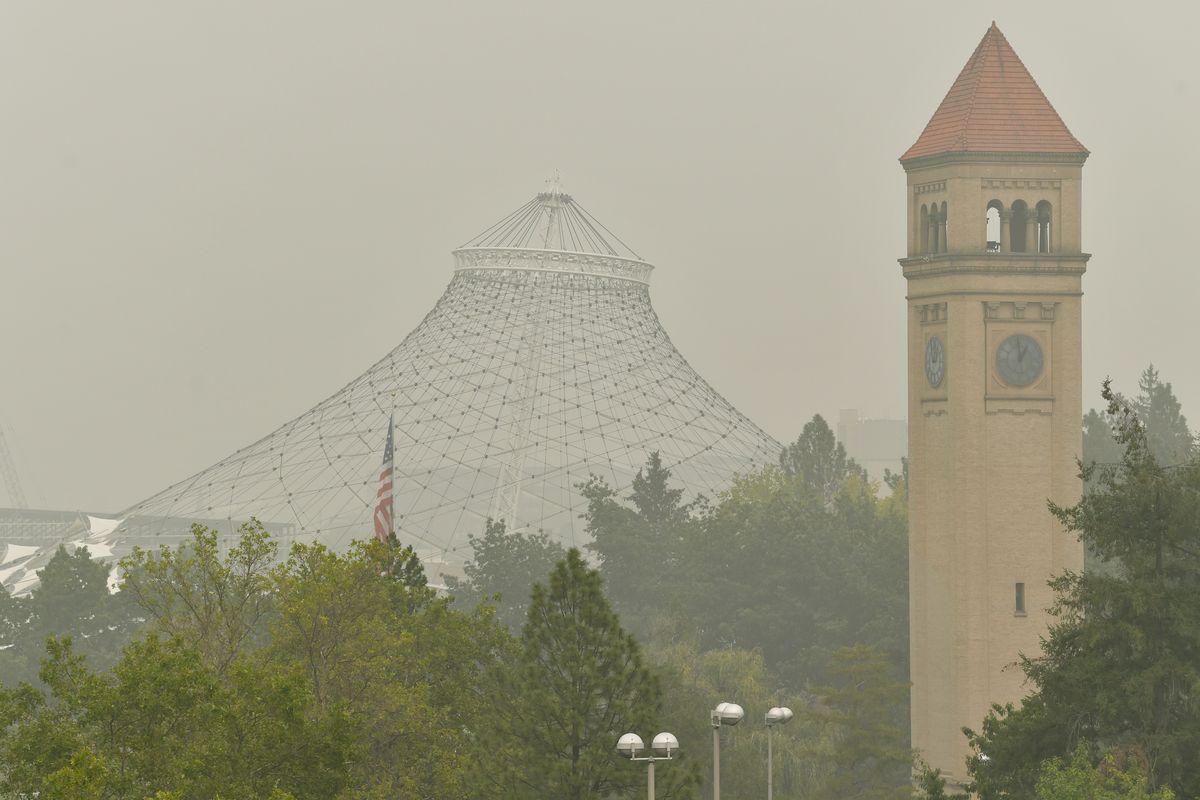Spokane likely to have the worst smoke since at least 1999. When will it get better?

The Spokane area’s hazardous air from massive western wildfires has delivered some of the worst pollution the region has seen this millennium.
“There’s no way to get around that,” Lisa Woodard, communications and outreach manager for Spokane Regional Clean Air Agency, said of the historic wildfires plaguing the West Coast.
The county had an hourly averaged rating of 468 Saturday afternoon for PM2.5, a pollutant from combustion that’s largely linked to wildfire smoke, Woodard said. Meanwhile, AirNow, part of the Environmental Protection Agency, put the city’s air at 468.

While the district won’t know the area’s one-day average until after midnight, Woodard said Saturday’s alarming numbers are likely to be the worst for that pollutant since it started being measured in 1999.
For context, the high before Saturday was an hourly average of 365 in August 2018, Woodard said.
“I think it’s safe to say we haven’t seen … smoke levels to this degree in recent years,” she said.
The abrupt shift Saturday from blue skies to charcoal gray rapidly put the area into the worst of six air-quality categories: hazardous. The “good” air category has a rating of 50 or under.
Woodard said air quality was still fine for everyone but the most sensitive groups as of 10 p.m. Friday. By around 1 a.m., it was unhealthy for everyone. Then by noon, it was hazardous.
“It went from, like, the 170s, all of the sudden we’re in the 300s and the 400s. So it seems like it really deteriorated rapidly,” Woodard said.
With less severe air ratings, there’s “some wiggle room there depending on what your existing health issues are” when it comes to safety, Woodard said.
But when air is hazardous, everyone – not just vulnerable groups – should limit time outside.
So when will the area get a break? Unfortunately, the smoke is expected to linger until at least Monday, forecasters said.
Steven Van Horn, a meteorologist with the National Weather Service in Spokane, said the smoke is likely to stick around until at least Monday morning. By that afternoon, a weather disturbance could push the air around enough to break some of the smoke up, and a chance of rain Tuesday would also help.
“We’d really like to see a good, strong cold front come through, but that does give us a couple opportunities for some gradual improvement going toward the middle portion of next week,” Van Horn said.
Still, it’s not necessarily going to be a great opportunity, he said.
“We don’t know how much the wind is going to scour out this pollution,” Woodard said.
“We’re thinking it’s going to scour out some of it, but to what degree?”
Especially in the COVID-19 pandemic, severe smoke generally spurs talk of respiratory health. But Van Horn said there are other safety factors to consider – like visibility.
“A lot of places are between, like, a quarter- and a half-mile visibility,” he said. “So it’s not only a health aspect, as far as breathing in the smoke, but also just, if out traveling, knowing that visibilities are going to be really low as well.”
Woodard said air ratings can change particularly quickly in fire season, so people should continue monitoring them to stay safe.
You can do that by visiting spokanecleanair.org/current-air-quality